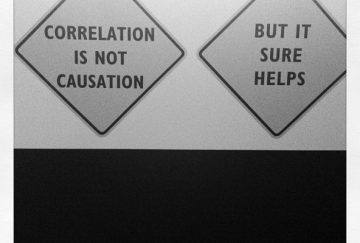Tim Maudlin in the Boston Review:
 “Correlation is not causation.”
“Correlation is not causation.”
Though true and important, the warning has hardened into the familiarity of a cliché. Stock examples of so-called spurious correlations are now a dime a dozen. As one example goes, a Pacific island tribe believed flea infestations to be good for one’s health because they observed that healthy people had fleas while sick people did not. The correlation is real and robust, but fleas do not cause health, of course: they merely indicate it. Fleas on a fevered body abandon ship and seek a healthier host. One should not seek out and encourage fleas in the quest to ward off sickness.
The rub lies in another observation: that the evidence for causation seems to lie entirely in correlations. But for seeing correlations, we would have no clue about causation. The only reason we discovered that smoking causes lung cancer, for example, is that we observed correlations in that particular circumstance. And thus a puzzle arises: if causation cannot be reduced to correlation, how can correlation serve as evidence of causation?
The Book of Why, co-authored by the computer scientist Judea Pearl and the science writer Dana Mackenzie, sets out to give a new answer to this old question, which has been around—in some form or another, posed by scientists and philosophers alike—at least since the Enlightenment.
More here.
